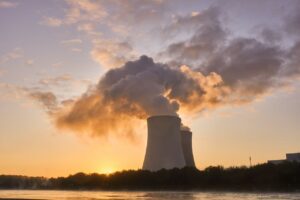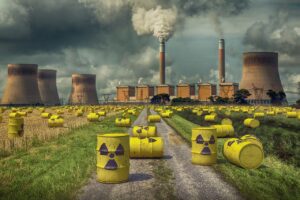On Nuclear Energy’s Potential
By Kryshia Gayle Solon
HAPI Scholars

Because of the excessive and prolonged use of fossil fuels to generate electricity, the world is now facing one of the most alarming environmental crises ever. Global warming yielded by increased greenhouse gas emissions has increased the temperatures around the world, causing catastrophic events such as devastating bushfire seasons, accelerated ice sheet melting in the glacial regions, and the frequency of many extreme weather events.
Unfortunately, there’s no single energy technology that can satisfy our global energy needs in one go. You might have heard of one of these technologies: nuclear energy. Historically, it has been around since the 1950s and there are about 450 nuclear reactors that supply about 11 percent of the world’s electricity. Nuclear technology improves air quality by generating large volumes of carbon-free energy. Nuclear plants have reactors that produce power through nuclear fission, in which the heat generated from the process is then cooled, creating steam that turns a turbine attached to a generator. Although many don’t consider it a renewable energy source because it relies on a mined and finite resource, proponents of this energy technology argue that its reactors do not produce any greenhouse gasses harming our environment. Additionally, thermal energy created from nuclear reactors can also be used to power the most reliable energy source on the grid today.

Nuclear power is a risky technology that will undoubtedly take time to become stable and cost-effective as technology advances to encompass elements not considered in previous nuclear reactor designs. Sometimes, it is perceived as a dangerous or unstable process by the general people because of the perception frequently influenced by three global nuclear accidents, its misleading link with nuclear weapons, and its depiction in popular television series and films. People who oppose nuclear technology refute its potential with the problems of long-lived nuclear waste and the risk of rare but devastating nuclear accidents such as those at Ukraine’s Chernobyl in 1986, the USA’s Three Mile Island in 1979, and Japan’s Fukushima Daiichi in 2011. There were indeed a lot of factors that caused these devastating accidents, such as poor nuclear reactor design, human error, and the building site of the power plant.
Technologies worldwide have developed and improved; thus, scientists and nuclear engineers spend endless amounts of effort on research and innovation for safer and less-costly nuclear facilities. Furthermore, arriving at a nuclear waste disposal strategy and encouraging further research on diverse geological locations that can handle the waste disposal requirements is a must. Many people perceive used fuel from nuclear plants as a rising issue and are concerned about its transportation, storage, and disposal. However, professionals who specialize in this field also evaluate assertive means in conducting them. Aside from that, used nuclear fuels – particularly from the 4th generation designs, are processable, which can alleviate the fears of nuclear waste. Another way to mitigate the threat of hazardous nuclear waste is to shift from a dangerous uranium fuel to less risky thorium or utilize nuclear fusion.
Compared to how we generate energy from fossil fuels, nuclear energy is still magnitudes less dangerous in terms of environmental effects and human health. It just needs more profound research and further study to reduce its cost and increase its safety in the management of leaks, accidents, and in some cases, terrorist threat considerations. We can support and deploy other renewable energy such as solar and wind turbine technologies to meet human needs.
Essentially, we still need to keep an open mind in addressing the limitations of nuclear energy and resolving them through a balanced approach to improving and making nuclear technology adaptable alongside renewable resources. While we invest and support the development and adoption of nuclear technology, we should gradually abandon the environmentally harming energy sources and focus more on renewable and safe energy-producing technologies.
References:
https://www.nationalgeographic.com/environment/article/nuclear-energy
https://www.nationalgeographic.com/magazine/article/nuclear-engineer-leslie-dewan-clean-energy-plan
https://earth.org/the-advantages-and-disadvantages-of-nuclear-energy/









